Top Smartsheet competitors
Smartsheet is a popular work management platform that helps teams collaborate more efficiently. It has a distinct spreadsheet-style interface with tools to simplify resource management, workflow automation, and reporting. But it’s not an ideal fit for every team.
The service is one of many work management platforms on the market today, and just like its competitors, it has its strengths and weaknesses. So it’s worth researching other options. A competing work management platform may better suit your style of work. Plus, you might save some money.
This guide explores the top 2025 Smartsheet alternatives and covers 13 competing platforms.
Why teams seek Smartsheet competitors
There’s a lot to like about Smartsheet, but it has limitations. Here are four.
First, it doesn’t have a built-in invoicing tool. You can integrate it with other platforms to plug this gap, but even that still leaves extra steps to bill a client. This can add up to a lot of unnecessary work if your team creates invoices frequently.
Another issue is Smartsheet’s steep learning curve, which users consistently report. That’s problematic for teams with frequent turnover. For example, if you work with a lot of freelancers, you may end up having more trainings on the platform than you’d like.
Third, the platform’s activity log is pretty limited, which makes it hard to see what has happened since you last logged on and creates unnecessary work.
Finally, Smartsheet’s autosave feature leaves a lot to be desired. Users say the platform doesn’t save as frequently as they expect. This can lead to lost work and lost time.
Many Smartsheet competitors don’t have these issues. Some are easy for new users to learn, while others have excellent invoicing and billing tools. But every work management platform has pros and cons. You’ll want to consider how these impact your team and work style, if you choose an alternative.
Core features to evaluate
Work management platforms are complicated tools with a wide variety of features, integrations, and interfaces. Before you begin evaluating Smartsheet alternatives, let’s review some criteria for your comparison.
Here, we highlight eight core features to consider. Some of these may be more important for your work style than others, and tools with those critical features will be a better fit for your business.
Ease of use
First, teams need a platform that’s easy to use. Otherwise, employees will lose time making mistakes, having misunderstandings, and asking questions they might not have to on a competing platform.
That’s why it’s important that the platform’s interface be intuitive. You may also want to look for an option with deep customization, so users can design dashboards that work well for them. The learning curve component is nuanced. Some work management platforms are hard to use initially but save a lot of time once an employee gets up to speed. Others are easy to use from day one but may lack some of the advanced features you’d get from a more complicated platform.
Scheduling and task management
The core of any work management platform is its scheduling and task management features. These tools help leaders organize, assign, prioritize, and track the many tasks of a large project.
Platform scheduling and task management come with differing interfaces, views, and tools. Some allow you to assign multiple workers to a task, while others don’t. They also differ in how they track and share progress updates.
One style or feature isn’t necessarily better than the others. Your choice will depend on how you prefer to manage projects, the kind of progress updates you need, and other personal factors that just aren’t the same for every business.
Reporting
Reporting features help you track things like
- Project status and task completion
- Time spent working for both individual employees and teams
- Budget estimations in real time, to keep project spending on track
- Analytics that identify trends, bottlenecks, and opportunities to improve
Some platform reporting tools are more in depth than others. You may or may not need that, depending on the complexity of your work.
For example, large teams trying to optimize team collaboration over time can benefit tremendously from analytics reports. But smaller groups not looking for work trends don’t need to pay extra for nonessential reporting capabilities.
Flexibility and personalization
You may also want to consider how easily a platform can be customized by users. People on your team may prefer to visualize their work in different ways. If you choose a platform that supports kanban, Gantt chart, and other views, it’ll be easy for those users to do what works best for them.
Customization capability can impact work efficiency. You don’t necessarily want to force every team member to view their tasks the same way. Doing so may lead some workers to take more time understanding and executing their assignments.
Pricing
Of course, pricing is a major factor in choosing the right work management platform. Most software providers charge a monthly rate per user, which increases if you want access to higher-tier versions of the platform.
Some also have minimum user thresholds. For example, you might need to pay for at least three users, even if you have only two full-time employees. This can increase costs unnecessarily for some teams.
If your work management needs are simple, a forever-free option may be all you need. But this option may allow a limited number of users and have fewer features than paid versions..
Automations and AI
Automation constitutes one of the key advantages of work management platforms. These tools streamline repetitive processes that eat into your work hours. For example, most platforms offer the following automations:
- Automatic task assignments based on triggers you choose
- Notifications for late projects, upcoming deadlines, and more
- Progress tracking and report generation
- New employee onboarding
- Document and resource management
Many Smartsheet alternatives also leverage AI tools that help with task assignment, predictive analytics, security, and other project management to-dos.
You may pay extra for more powerful automation and AI features. You can learn more about automation software by reviewing our guide.
Integrations
Most work management platforms integrate with other popular business tools, allowing you to connect data and conversations from one platform to another. Integrations turn your work management platform into a single source of truth that can be the only tool employees use to complete their tasks.
Scalability
Finally, it’s wise to choose a work management platform that will scale with your group over time. Pay attention to the price of higher-tier versions of the plan you need today. You might be comfortable with a platform’s pricing for entry-level teams, but what if the cost soars for larger groups or groups with more advanced needs? If the cost is too high, you may end up switching platforms as your team grows, a process that can be costly and time consuming.
So don’t consider only whether a Smartsheet competitor will work for you today. Consider how you want your team to evolve and how platforms might support or delay that process.
Top 13 Smartsheet alternatives
Airtable |  Jotform Boards | Trello | monday.com | Notion | Asana | Teamwork.com |  Zoho Projects |  Planview |  Wrike | Basecamp |  Microsoft Project |  Paymo | |
|---|---|---|---|---|---|---|---|---|---|---|---|---|---|
| Best for | Startups & creative teams | Support, Marketing and HR teams | Individuals & small teams with linear workflows | Marketing & software teams | Product/design; remote marketing | Teams wanting simple UX + Google/MS integrations | Budgeting, workload, profitability tracking | SMBs already on Zoho | Enterprise portfolios & resource mgmt | Marketing/creative, product, HR | Small–midsize teams; education & nonprofits | Complex projects needing advanced planning | Agencies/freelancers needing time tracking & billing |
| Key features | Spreadsheet + database; AI no-code app builder; templates | Kanban + forms; 300+ widgets; 100+ integrations; visual reports | Kanban boards; Butler automation; Power-Ups | Customizable dashboards; Gantt/kanban; automations; time tracking | All-in-one workspace; databases; AI search; 30k+ templates | Multiple views; AI for workflows/goals; 100+ integrations | Advanced reporting; time & budget tracking; client portals; automations | Gantt & kanban; dependencies; Zia AI; 50+ integrations | Enterprise analytics; scenario modeling; PSA; multiple PM modes | Custom dashboards; real-time doc editing; time tracking; 400+ integrations | Comms hub; message boards & chat; calendar; 70+ integrations | Desktop & cloud; Gantt/timelines; advanced resource mgmt; tight MS 365 integration | Robust time tracking; multiple invoice types; Gantt/kanban/list views |
| Pricing | Free plan available; $20/user/mo | Free plan available; $34/mo | Free plan available; $5/user/mo | Free plan available; $9/user/mo | Free plan available; $10/user/mo | Free plan available; $10.99/user/mo | $10.99/user/mo (min 3–5 users) | Free plan available; $4/user/mo | Custom pricing | Free plan available; $10/user/mo | Free plan available; $15/user/mo (or $299/mo unlimited users) | Free for M365 Subscribers $10/user/mo | Free plan available; $5.90/user/mo |
| G2 Rating | 4.6 | 4.7 | 4.4 | 4.7 | 4.6 | 4.4 | 4.4 | 4.3 | 3.6 | 4.2 | 4.1 | 4.0 | 4.6 |
Each of the following tools work similarly to Smartsheet. The best fit for your business depends on how you feel about each platform’s pros, cons, and unique features.
Airtable
With the features of a spreadsheet and a database, Airtable provides businesses with more flexibility and customization options than Smartsheet. You can easily link projects, tasks, and data across different teams, allowing for more complex inter-team relationships. Teams can design their own workflows and views, making it easier to visualize projects and prioritize tasks. Small and medium-sized companies looking for a versatile, easy-to-use project management tool can benefit from Airtable.
Best for: Startups and creative teams find Airtable’s visual and flexible nature advantageous for managing workflows. Read our full Smartsheet vs Airtable breakdown.
Developer: Formagrid Inc. created Airtable to provide teams with an alternative to spreadsheets and project management tools. By combining spreadsheets with databases and custom apps, Airtable offers a flexible platform to organize workflows and tasks more efficiently.
Key features: Combined database and spreadsheet software makes Airtable highly customizable. AI tools can automate tasks, increasing productivity. The AI-powered no-code custom app builder lets users easily create applications on top of their data. Airtable also integrates with most popular business tools and provides templates for diverse use cases.
Pros
- Forever-free plan
- Airtable Cobuilder, AI that autogenerates databases
- Interface that is lightweight and user friendly
- Collaboration tools that are highly versatile
Cons
- Paid plans are more expensive than other alternatives.
- Data entry limitations can be problematic for larger organizations.
Plans/pricing
| Plan | Cost (when billed annually) |
|---|---|
| Free | Free (up to five editors) |
| Team | $20/user/month |
| Business | $45/user/month |
| Enterprise | Custom pricing |
G2 rating: 4.6 out of 5 stars
Jotform Boards
Jotform Boards provides businesses with an intuitive task management solution to streamline workflows and organize tasks. This tool offers a spreadsheet-like interface with database features that let you store, sort, and filter data, and connect with online forms to populate the spreadsheet tables.
This database capability makes Jotform Boards an ideal choice for small and medium-sized businesses that need more than basic spreadsheets. Users can create a board from scratch or connect forms to turn submissions into actionable tasks automatically. The kanban-style board offers drag-and-drop functionality to simplify task organization. Your employees can customize the board to reflect workflow steps, adjust task layouts, and select which fields to display in card view.
Full mobile responsiveness makes Jotform Boards perfect for collaboration. Users can track and manage tasks anywhere, at any time. If using their phones, team members can also share boards, assign tasks, add comments, and track changes through the Activity Log.
Best for: Customer support teams, marketing professionals, and HR teams that need to manage projects and tasks with a visual kanban approach.
Developer: Jotform chief executive officer Aytekin Tank founded Jotform in 2006 as a no-code form builder for people with no coding experience. Jotform Boards was added in 2025 for tracking, monitoring, and filtering tasks and improving workflows.
Key features: An intuitive layout makes Jotform Boards easy for users of all technical backgrounds. Over 300 widgets help advance your forms’ functionality. And integrations with over 100 tools and platforms, including Google Analytics, provide deep insights, and the visual report builder simplifies key takeaways.
Pros
- Has 24-7 customer support and a 30-day money-back guarantee
- Includes over 10,000 categorized forms and templates to make starting new projects a breeze
- Has deep customizability, with adjustable workflow steps, task layouts, and field displays
- Features full mobile responsiveness, so users can track and manage tasks from anywhere
- Offers options for creating boards from scratch and connecting forms, turning submissions into actionable tasks automatically
Cons
- Advanced features can be difficult to learn.
- All plans except Enterprise are designed to support a single user.
Plans/pricing
| Plan | Cost (if billed annually) |
|---|---|
| Free | Free (five form limit) |
| Bronze | $34/month |
| Silver | $39/month |
| Enterprise | Custom pricing |
G2 rating: 4.7 out of 5 stars
Trello
Trello is often compared to an online whiteboard with digital sticky notes. The highly visual project management tool lets teams use kanban boards, lists, and cards to organize their tasks and workflows. Users can create boards for individual projects, break project stages into lists, and communicate tasks on cards.
Where Smartsheet works for complex projects and tracking, Trello is better suited for smaller projects and teams that communicate with a simple, visual approach. Its interface is highly intuitive and easy to use. Beginners looking for an affordable, simple project management solution with optional upgrades can benefit from Trello.
Best for: While probably not the best option for complex projects, Trello is ideal for individuals and small teams with linear workflows. The platform can help those groups organize content calendars, manage design workflows, and track their progress.
Developer: Fog Creek Software created Trello after noticing how many teams used sticky notes on whiteboards to manage projects. The developers created Trello as a digital version for tracking which team members are working on what tasks.
Key features: With Trello’s simple layout, users of all technical skill levels can understand it. Butler, Trello’s built-in automation feature, helps teams automate tasks on boards and access advanced features. If you need additional features, you can upgrade Trello through Power-Ups, although some features will cost extra.
Pros
- Dashboards that are intuitive and straightforward for new users
- Plans that affordable
- Workflow automation that makes it easier to use advanced features
- Hundreds of integrations with popular apps
Cons
- Basic reporting and analytics features make it difficult to learn from your work habits.
- Support for free and standard users is limited.
- Time tracking isn’t embedded.
Plans/pricing
| Plan | Cost (when billed annually) |
|---|---|
| Free | Free (up to 10 collaborators) |
| Standard | $5/user/month |
| Premium | $10/user/month |
| Enterprise | Custom pricing |
G2 rating: 4.4 out of 5 stars
Monday.com
A popular project management tool known for its visual and intuitive platform, Monday.com offers highly customizable dashboards, Gantt charts, and kanban boards. With these features, managing and tracking projects become visually stimulating activities. Additional features (like activity logs, real-time updates, and communication tools) facilitate workplace collaboration.
While Monday.com provides data management, its capabilities are not as sophisticated as Smartsheet, which can offer complex data analysis and reporting for complex projects. But if collaboration and visual communication are important for your team, Monday.com is a good choice, though its pricing system can be a little confusing.
Best for: Marketing and software development teams will enjoy Monday.com’s features for tracking progress and planning projects.
Developer: Developers originally created this system as an internal tool to improve communication and transparency at the software company Wix.com. However, they realized the solution could benefit other companies, spun it off as a new startup, and renamed Monday.com Ltd. in 2017.
Key features: Monday.com’s advanced reporting updates automatically. Automations help to assign work based on employees’ existing workflows, while integrated time tracking allows workers to log time directly within tasks. The platform also comes with hundreds of templates, to make starting new projects easier.
Pros
- Highly customizable visualizations
- Responsive support through an integrated live chat
- Over 200 new project templates
- Simple, rule-based, and time-saving automations
Cons
- New users can find Monday.com overwhelming, because of its vast customizability.
- The platform limits activity log tracking for free and basic users.
- Paid plans require a minimum of three users and must be expanded in increments of five.
Plans/pricing
| Plan | Cost (when billed annually) |
|---|---|
| Free | Free (up to two seats) |
| Basic | $9/user/month |
| Standard | $12/user/month |
| Pro | $19/user/month |
| Enterprise | Custom pricing |
G2 rating: 4.7 out of 5 stars
Notion
Notion is a highly customizable all-in-one workspace platform for note-taking, project management, and task management. Users can customize their workspace with databases, calendars, and documents. Teams also use Notion for creating shareable wikis and knowledge bases.
While it doesn’t have the same number of project tracking and resource management features as Smartsheet, it is extremely flexible and good for teams that need to customize databases and workflows. Experienced users looking for a one-stop shop for project management, note-taking, customer relationship management (CRM), and content creation will appreciate Notion.
Best for: Product and design teams find Notion useful for managing knowledge bases and centralizing information and feedback. Marketing teams can create content and plan campaigns effectively in the tool, even if they work remotely.
Developer: Notion Labs Inc. created this system to address frustrations with using multiple applications for different workplace tasks. By offering a single tool to handle note-taking, task management, and project tracking, the company offers teams an all-in-one workspace for simplifying information management.
Key features: Notion’s automation features help you create and edit database pages, send notifications, and streamline other tedious tasks. Its built-in AI search function makes it easier to find key data in workspaces and connected apps. Integrated tools help turn pages into websites in minutes, and Notion provides access to more than 30,000 templates to help with starting new projects.
Pros
- All-in-one platform for note-taking, task management, CRM, and content creation
- Simple, yet powerful tool for creating and connecting databases
- High level of customization for user permissions
- Optional AI add-on (though it adds $8–$10 to the monthly price)
Cons
- Offers no options for offline access
- Has a steep learning curve and can be challenging for the non-tech-savvy
- Is limited as a project management tool
Plans/pricing
| Plan | Cost (when billed annually) |
|---|---|
| Free | Free (up to 10 guests) |
| Plus | $10/user/month |
| Business | $15/user/month |
| Enterprise | Custom pricing |
G2 rating: 4.6 out of 5 stars
Asana
Designed to help organize, track, and manage individual and team tasks, Asana has a user-friendly interface teams find easy to adapt into their workflows. Strong collaboration features (like task comments, team conversations, and real-time updates) make project coordination easier.
Teams can also customize their workflows and views, easing distractions and promoting focus. Asana’s free plan for teams with 10 or fewer members could be very useful for small teams looking for a long-term free option.
Best for: Teams that value a simple, intuitive interface and that already use Google Workspace or Microsoft Office 365 will appreciate Asana’s existing integrations with these platforms.
Developer: Former Facebook engineers Dustin Moskovitz and Justin Rosenstein founded Asana to streamline workflows and reduce the time spent on communication and logistics. They worked with the goal of enhancing team collaboration through better organization, management, and tracking.
Key features: Asana’s powerful kanban-style dashboard provides multiple views for users with diverse needs. Integrated AI features can build entire workflows, answer complicated questions, and help teams set goals. Robust team collaboration tools can make the platform your organization’s single source of truth. Asana also integrates with over 100 popular apps (like Slack, Zoom, and Google Drive), eliminating the need to switch between platforms.
Pros
- New users can get up to speed easily.
- The free plan includes the vast majority of tools and features that paid users receive.
- Multiple project views (including kanban boards, lists, and calendars) give users flexibility.
- The built-in AI editor and tools assist with reporting, project summaries, and goals.
- The platform supports agile project management and scrum.
Cons
- Has limited time-tracking features
- Allows just one user to be assigned to a task at a given time
- Collects and repurposes data from free users, which could pose a security risk
Plans/pricing
| Plan | Cost (when billed annually) |
|---|---|
| Personal | Free (up to 10 teammates) |
| Starter | $10.99/user/month |
| Advanced | $24.99/user/month |
| Enterprise/Enterprise + | Custom pricing |
G2 rating: 4.4 out of 5 stars
Teamwork
Teamwork.com helps with task management, resource allocation, time management, and project planning. This project management platform offers a wide range of collaboration tools, including team chats, real-time messaging, project updates, and videoconferencing. It’s an extremely comprehensive solution for companies that need to facilitate teamwork. Teams that have at least three to five users, want a simple tool, and need powerful support for time and budget tracking can benefit from this platform.
Best for: Teamwork.com is particularly well suited for financial and resource management, for example, work related to budgeting, workload management, and profitability tracking.
Developer: The platform was created with client-focused businesses and agencies in mind. Seeing a need for clients to view project progress and communicate more efficiently with businesses, the developers created a single platform to centralize client work, including project management, invoicing, time tracking, and client communication. Through Teamwork.com’s client portals, your clients can access project updates and communicate with your team, for maximum customer satisfaction.
Key features: Teamwork.com provides advanced reporting with custom options for higher-tier users. It integrates with over 80 popular business tools, such as Microsoft Office and Google Workspace, helping you streamline workflows. Its detailed project budgeting feature contains optional alerts for budget usage, helping you avoid overspending. Optional Gantt charts are also available for teams that need to deal with multiple tasks and deadlines.
Pros
- Simple terminology for beginners
- Integrated time and budget tracking, with invoice calculations
- Time-saving automations for repetitive tasks like user assignments, comments, and project-channel messaging
- Customizable time- and event-based triggers
Cons
- Plans require a minimum of three to five users, potentially increasing your costs unnecessarily.
- The platform doesn’t have security features like forced multifactor authentication.
- Customer support hours are based on India Standard Time, which could delay the help you need.
Plans/pricing
| Plan | Cost (when billed annually) |
|---|---|
| Deliver | $10.99/user/month |
| Grow | $19.99/user/month |
| Scale | $54.99/user/month |
| Enterprise | Custom pricing |
G2 rating: 4.4 out of 5 stars
Zoho Projects
Zoho Projects is a cost-effective alternative to Smartsheet. Its user-friendly, intuitive interface works for employees of different skill levels. It also has several project management features, including Gantt charts, time tracking, automation capabilities, and collaboration tools.
Best for: Small and medium-sized businesses that already use Zoho applications will find Zoho Projects easier to use in existing workflows.
Developer: Zoho Projects emerged from Zoho Corp.’s need to manage its own software application projects. With comprehensive features for planning, tracking, and managing projects, the tool enables teams to work together more effectively.
Key features: Zoho Projects has robust task management tools, including dependencies, multiuser assignments, and basic templates for paid users. Team members can swap between kanban boards and Gantt charts, depending on their visual preference. Deep customization options for financial management and project budgeting help small and medium-sized businesses manage project finances.
Over 50 integrations with popular business tools, including many in the existing Zoho ecosystem, can help your team streamline workflows. In addition, an integrated AI system can answer questions based on provided data, forecast project risks through predictive analytics, generate content, and optimize resource use.
Pros
- Is one of the most affordable project management tools on the market
- Is easy for new users to set up and benefit from
- Has a built-in chat feature for project groups and individual collaborators
- Comes with an integrated AI assistant, Zia, to help with planning, data analysis, and scheduling
- Can assign one task to multiple people
Cons
- Workflow rules are offered only to Enterprise clients.
- The number of templates is far lower than comparable options.
- The platform’s customization options are limited, compared to alternatives.
Plans/pricing
| Plan | Cost (when billed annually) |
|---|---|
| Free | Free (up to five users) |
| Premium | $4/user/month |
| Enterprise | $9/user/month |
| Project Plus | Custom pricing |
G2 rating: 4.3 out of 5 stars
Planview
An enterprise work management platform, Planview provides robust features for digital product development and strategic portfolio management. While more expensive, and potentially more complex to implement, than Smartsheet, Planview should be considered if your company has enterprise-grade project portfolios and resource management needs. Such teams looking for deeper analytics-based insights and complete control over the work experience on a project-by-project basis should consider Planview.
Best for: Agile, project management, and engineering teams would benefit from Planview’s ability to visualize, organize, and adjust work projects quickly.
Developer: Planview was built in 1989 to help organizations connect work to strategic objectives and better allocate resources. The platform provides a centralized location to view projects, resources, and financials, improving collaboration and optimizing assets. In 2020, TPG Capital and TA Associates acquired Planview to support the platform’s continued growth.
Key features: Planview offers powerful analytics tools to find gaps and bottlenecks as they emerge. With integrated scenario modeling, your company can evaluate how internal or external changes will impact plans and course correct. Extensive professional services automations can help you reduce costs, find new efficiencies, and unlock more revenue.
Pros
- Generates powerful analytics and reporting for enterprise-grade teams
- Helps teams visualize and understand dependencies with application portfolio management tools
- Supports top-down scoring methods and decentralized project prioritization
- Lets teams choose their ideal work experience from lean, agile, collaborative, and traditional project management models
Cons
- Offers only custom pricing and plans and doesn’t provide quotes on its website
- Has relatively low G2 rating compared to the other project management tools on this list
Plans/pricing: Planview doesn’t share pricing and plan details publicly. You’ll need to contact the company for a personalized quote to learn if it fits your budget.
G2 rating: 3.6 out of 5 stars
Wrike
A project management tool capable of handling large amounts of data, Wrike is built for more enterprise-level organizations dealing with larger, complex projects. If your teams needs a versatile, all-in-one project management solution with strong collaboration features and great visualization options, you’ll benefit from Wrike’s customizable dashboards, kanban boards, and real-time editing. However, your team will need to find another solution for invoicing and budgeting.
Best for: Marketing and creative teams can use Wrike to gain insights into campaign performance. Product development teams can use it to manage product life cycles. HR can streamline its processes.
Developer: Software entrepreneur Andrew Filev founded Wrike in 2006. He wanted to build a flexible platform that combined project management and social networking features to aid workplace collaboration. In 2023, Wrike was acquired by Symphony Technology Group.
Key features: Wrike provides robust support for different project management frameworks and views. Its integrated document editing tool lets users collaborate on documents in real time and make updates within the platform. Built-in time tracking collects data that can be used for realistic forecasts of project completion. Over 400 integrations with popular business tools help streamline workflows, and an intuitive automation builder features helpful templates. Wrike’s dashboards provide data-rich views of project progress, helping teams learn from the work they do over time.
Pros
- Offers a wide variety of project management tools for large and diverse teams
- Supports ongoing work management needs, as well as one-off projects
- Can assign multiple people to a single task
- Has many formatting customization options, with choices like lists, tables, and boards
- Features a modern, sleek interface that’s visually simple for new users
Cons
- The platform doesn’t have deep functionality for invoice and budgeting.
- Paid plans are pricey compared to the competition.
Plans/pricing
| Plan | Cost (when billed annually) |
|---|---|
| Free | Free |
| Team | $10/user/month |
| Business | $25/user/month |
| Enterprise/Pinnacle | Custom pricing |
G2 rating: 4.2 out of 5 stars
Basecamp
Teams that prefer a less complex interface for centralizing updates and team conversations will appreciate Basecamp. This project management and team collaboration tool offers simple task assignment and tracking tools, along with a centralized platform for file sharing, communication, and task management. If your team is medium-sized and needs an affordable, user-friendly software solution, Basecamp’s straightforward design is ideal.
Best for: Small and midsize teams that don’t need advanced project management tools for complex assignments (for example, educators, students, and nonprofits) can benefit from Basecamp’s simple and affordable platform.
Developer: Web design firm 37signals created Basecamp in 2003 as an internal tool for its own projects. After 37 signals offered it to clients, the software as a service became more popular than the web design business. So the firm rebranded itself as Basecamp.
Key features: Basecamp is primarily for facilitating project communication and offers multiple ways to stay in touch with team members, including message boards and real-time chat. The platform also integrates with over 70 popular business tools, like Slack, Google Drive, Trello, and Asana. The dashboard is intuitive and features an integrated calendar for upcoming project and task deadlines.
Pros
- Offers a plan for unlimited users, with a capped monthly price
- Hosts free accounts for students and teachers, plus discounted options for nonprofits
- Supports client access, allowing customers to follow along as your team works
- Contains multiple communication options, including direct messages, project comments, and team-wide announcements
- Provides customizable templates for often-repeated project types
Cons
- No built-in features for budgeting and invoicing
- Fewer advanced project management features than competitors
- Expensive per-user prices for all but the largest teams
Plans/pricing
| Plan | Cost (when billed annually) |
|---|---|
| Free | Free (one project at a time) |
| Plus | $15/user/month |
| Pro Unlimited | $299/month (unlimited users) |
G2 rating: 4.1 out of 5 stars
Microsoft Project
Microsoft Project has features for detailed scheduling and resource management, making it perfect for advanced project planning. Gantt charts help visualize tasks and aid with projects that need extensive timeline management. If your teams already uses Microsoft products or has subscriptions to Microsoft 365, Microsoft Project can be cost-effective, as the software is free for these users.
Best for: Microsoft Project is best suited for teams with complex projects that require advanced features.
Developer: Like many of the software solutions on this list, Microsoft Project was developed as an internal tool to streamline task and resource tracking. Microsoft eventually took Project public, and it has since become a widely used project management software.
Key features: The platform offers both desktop and cloud-based versions (with slight differences in layout and features). Users can easily swap across timeline, Gantt chart, and task list views. It provides more advanced resource management and reporting features than its competitors, and obviously, it integrates perfectly with other Microsoft products, including Microsoft Teams and SharePoint.
Pros
- Free for existing Microsoft 365 subscribers
- Integrated support for project budgeting and invoicing
- More advanced and detailed reports than many competitors
- Automated task scheduling, with several templates
- Helpful analysis of project timelines, to review how quickly your team needs to work to reach a deadline
Cons
- Complicated for a new user to learn, especially those with minimal project management experience
- Expensive on a per-user basis
- Outdated interface relative to modern competitors
Plans/pricing
| Plan* | Cost (when billed annually) |
|---|---|
| Planner 1 | $10/user/month |
| Planner and Project Plan 3 | $30/user/month |
| Planner and Project Plan 5 | $55/user/month |
*Microsoft Project is free for Microsoft 365 subscribers.
G2 rating: 4.0 out of 5 stars
Paymo
If your business needs a time-tracking and invoicing tool, go with Paymo. This work management platform provides not only project management features but time tracking for accurate billing and analysis of project costs. Your team can manage client information in Paymo and view tasks and schedules as Gantt charts, kanban boards, and lists.
Best for: Marketing agencies, web development companies, and freelancers who need help with time tracking and billing will appreciate Paymo’s features.
Developer: In 2007, Paymo founders realized they needed a better way to stop underbilling clients and track work hours for their web development agency Light Design Studio. They built an online app for time tracking that allowed them to generate more accurate invoices. The app went public and became very popular with freelancers and small businesses, eventually evolving into a complete work management platform.
Key features: Originally built to track work hours, Paymo offers some of the most robust features for time tracking and billing of any project management tool on the market. You can also create multiple invoice types based on either tracked time or fixed rates. Paymo provides a single place to view all team tasks across all projects, filtered by priority and due dates. Your team can also customize their views through multiple options, including kanban board, calendar, and Gantt chart.
Pros
- Focuses more on invoicing, billing, and time tracking than competitors
- Offers helpful user permission customizations
- Supports Gantt charts, along with table and list views
- Has a user friendly, intuitive interface with a short learning curve
Cons
- Limited integration options compared to competitors
- Tailored for finances and time tracking more than advanced project management
- Few customization options compared to other project management tools
Plans/pricing
| Plan | Cost (when billed annually) |
|---|---|
| Free | Free (unlimited users, up to 10 projects) |
| Starter | $5.90/user/month |
| Small Office | $10.90/user/month |
| Business | $16.90/user/month |
G2 rating: 4.6 out of 5 stars
Which Smartsheet competitor should you choose?
Smartsheet may be the most popular spreadsheet software on the market today. But it’s hard to learn, doesn’t have a native invoicing tool, and has other limitations that could make it a poor fit for your team.
Each of the highlighted tools in this article is a viable alternative to Smartsheet. Some emphasize affordability and ease of use, while others prioritize payments and time tracking. The best fit for your business will depend on how your team operates.
We may be a little biased, but Jotform is a well-rounded option that deserves some consideration. It has an intuitive, easy-to-learn layout and offers deep customization and advanced tools for power users.
But don’t take our word for it. Sign up at Jotform for free to see whether it could fit your work management needs.
This article is for project managers, operations leaders, and business owners who are exploring alternatives to Smartsheet to find a more intuitive, cost-effective, or customizable work management platform for their teams.


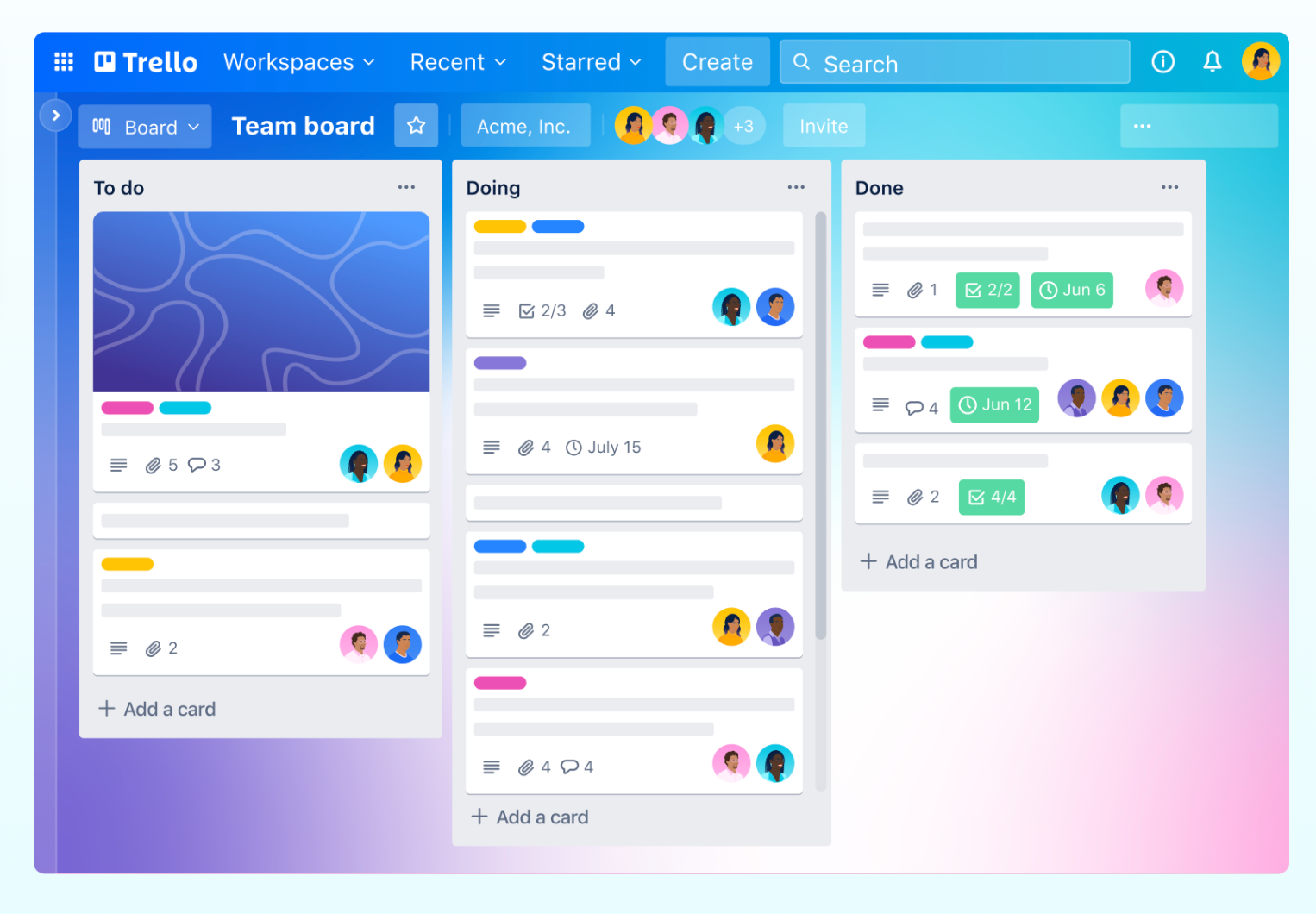














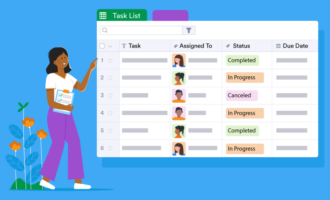
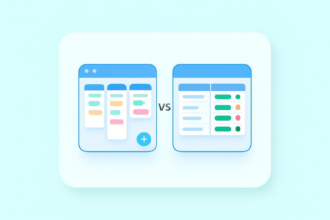







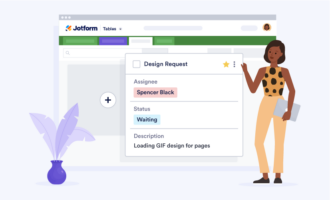

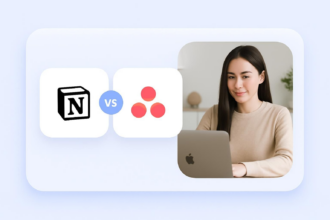




Send Comment: